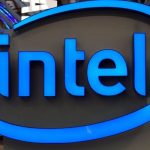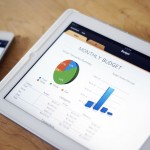This Monday Apple Inc. launched Apple Pay in the U.S., its new digital payment service, as the phone maker takes on a new market.
The iPhone has already taken the place of many devices, including music players, GPS systems, watches, cameras, calendars and many more. Now the tech-giant found another target, the wallet. With the new Apple Pay system, people will be able to pay for purchases with their phones, regardless of whether they bought something online or in person.
The new feature is available for the iPhone 6 and the iPhone 6 plus, which were released last month. Apple Pay allows users to settle transactions related to acquiring applications directly from their phone. Meanwhile goods purchased in brick-and-mortar stores can be paid for by simply waving the phone over the terminal. The device stores credit or debit card information, meaning the person shopping wont have to type in PIN codes or card numbers, thus simplifying and speeding up the process.
Apple Pay is also included in the companys new iPads, which were introduced to the public in a low-volume press event in Cupertino last Thursday. The devices have built-in fingerprint reader which enables consumers to use digital payment services. Apples smartwatch is also going to be equipped with the near-field communication technology that Apple Pay uses, as it arrives next year.
Apples new system will enable consumers to shop in over 220 000 stores around the states, including McDonalds, Whole Foods and Walgreens. However, many others, including the biggest U.S. retailer Wal-Mart, are not part of Apple initiative, as only a small number of facilities have the near-field equipment needed to communicate with Apple Pay.
The Cupertino, California-based company expects these problems to solve themselves as many retailers are likely to upgrade their terminals in order to accept chip-embedded cards and be in sync with the new anti-fraud rules. Most of the new payment devices will be able to read near-field communication.
The tech company has signed up with the six largest card issuers, responsible for around 83% of all credit-card transactions. Apple also has the three major credit-card networks, Visa Inc., Master Card Inc. and American Express Co. However, corporate credit-cards, prepaid cards and retailers proprietary credit cards are not included in Apple Pay yet.
Jim Sluzewski, a spokesman for Macys, said that he expects the companys name brand card to be included eventually. He also mentioned that half of the department stores sales come from its card, which is also tied to its loyal program.
In an interview, Eddy Cue, Apple’s senior vice president said: “We’re trying to do something that I think is a game changer and it requires a lot of people to play together, there’s a lot to do here and we have a lot of work to do, but it should be huge.”
Apple has also improved on security, as the new payment system encrypts every transaction with a distinctive one-time-only usable code. The measures were taken in consideration with the recent database breaches at retailers, such as Target and Home Depot.
Financial institutions within Apple Pay will be charged a small percentage from each transaction, however there will be no additional cost to customers and retailers. Gene Munster, an analyst at Piper Jaffrays, projects revenue brought by this to be 118$ million in 2015.
Mr. Cue said he expects a major part of Apple Pays early transactions to be for applications purchases as Apple aims to simplify the process and make it similar to Amazons “one-step checkout” that can be verified by a fingerprint.
“We believe that Apple Pay will accelerate mobile payment adoption, although it will likely take some time,” Morgan Stanley analysts wrote in a report to clients earlier this month.
Apple Inc. climbed 1.46% on Friday and closed at $97.67 on the NASDAQ. On Monday the stock edged up 1.87% to trade at $99.50 at 14:56 GMT, marking a one-year increase of 36.94%. The company is valued at $584.84 billion. According to the Financial Times, the 44 analysts offering 12-month price targets for Apple Inc. have a median target of $112.00, with a high estimate of $139.00 and a low estimate of $60.00. The median estimate represents a 14.67% increase from the last close price of $97.67.





